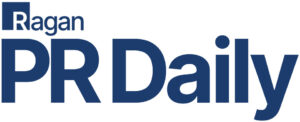How to make your message accessible for a global audience
As information is more accessible to audiences around the world, communicators must be adaptable and consider how to use brand purpose to make an impact.

Rapidly advancing technology, spurred by COVID-19 and a renewed collective consciousness regarding sustainability, has forever changed how governments, NGOs and businesses collaborate. As companies continue to expand operations, supply chains, and environmental, social and governance (ESG) goals beyond traditional borders, it is crucial to think strategically about how corporate public affairs initiatives and partnerships are designed and received across nations and regions.
The cornerstones of public affairs have evolved from their roots in traditional communications, advertising and grassroots activism to being far more interdisciplinary, where the consideration of legal, political and socio-economic complexities shape global programmatic design and implementation.
With this evolution comes a need for self-reflection and evaluation to ensure your public affairs campaigns remain relevant and meaningful.
Adaptability, purpose, and impact have become the new competitive advantages for companies that are looking to build successful global public affairs campaigns, underpinned by cultural competencies and understanding of social nuance.
The global public affairs agencies, departments, and practitioners who best understand this shift will be the ones who create the most successful campaigns and create the most value for stakeholders and society in the long-term.
Adaptability
While technology has been a major driving force in inextricably linking our world, it has also created challenges for external affairs professionals trying to reach stakeholders and audiences.
Digital communication technologies have made information sharing instantaneous across markets and geographies but have created greater opportunities for individuals to insulate themselves from differing viewpoints or messages. Self-publishing tools have made it easier for new opinions and ideas to be shared, but have also made it harder to decipher the credibility of source data or information. Demographic and psychographic data capture has created openings for incredibly precise microtargeting, but also opened the door to privacy and property ownership concerns or regulatory frameworks that differ from country to country.
As legacy forms of communication increasingly are challenged by new methods and tools, entirely new strategies for engagement and advocacy are needed to break through the noise. How public affairs strategies adapt to this rapidly and continuously changing communications landscape matters.
Purpose
Movements and campaigns, now more than ever, need to be driven by purpose and rooted in action.
There is a growing desire among the world’s youth to support companies and products that share their values for sustainability, social equity, human rights and ethical sourcing. And along with this desire for purpose-driven consumption is an increase in representation. By 2025 close to 75% of the workforce will be comprised of millennials and younger generations. We have already seen this reorientation of values taking root worldwide, and have seen the sustainably-driven public affairs campaigns looking to take advantage of this sea change (pun depressingly intended).
It’s no surprise that the largest delegation at COP26 was no single country, but the fossil fuel industry lobby looking to align themselves with these value-driven conversations. The good news is that while our world’s youth matures into professional demographic significance, their unprecedented access to knowledge and information provides them with an even greater ability to understand corporate initiatives, and to decipher between promise and delivery.
Impact
Public affairs professionals must ensure initiatives are focused on impact.
Specific metrics or indicators to evaluate success and transparent performance data disclosures are the “walk” behind the “talk,” and can transform a PR campaign into a tangible force for good. Creating these kinds of measurable public affairs programs along with relevant milestones or roadmaps that demonstrate year-over-year progress towards goals is necessary for building trust.
How industries step up will shape how they are perceived for generations to come. Companies will undoubtedly benefit from prioritizing long-term preservation of our world over short-term profits, but failure to outline specific metrics on the minimization of human and environmental impacts will cause public affairs initiatives to fall flat and corporate reputations to suffer the consequences.
While globalization continues to shrink our world, corporate external affairs and public relations departments will have an outsized role to play in helping their organizations to build strong and sustainable coalitions, culturally-relevant communications and advocacy campaigns, and purposeful ESG initiatives that meaningfully address our world’s greatest challenges.
Through the creation of innovative and comprehensive public affairs campaigns, new audiences can be reached, new ideas can take root in meaningful ways. New movements can be inspired, and new coalitions can be built. This collective responsibility to build a better world as it shrinks around us will be the defining endeavor of our lifetime, and how corporate public affairs departments and professionals rise to the challenge will define their social and corporate success for decades to come.
Rebecca Cowle is a vice president in the public affairs & crisis practice of BCW and a master’s student at The George Washington University’s Elliott School of International Affairs.







The name BCW could make you think “who’s that?” but this is actually
one of the most successful firms in Washington PR. They win for clients
repeatedly.
The “B” is for Burson. The way they win—with what they call
Adaptability, Purpose and Impact—is enlightening to recognize.
.1. DO WHAT WORKS which may not be what the client comes to you
wanting to do. If you look at the last paragraph under Adaptability, you
realize that Facebook’s management may be in love with the new name
but the attempted “rebrand in the face of true crisis” leads to “poor
publicity” and delays doing what is needed for the client and the PUBLIC:
persuasive communications built around not a new name but an old
truth, that what the public cares about most is “what’s in this for us?”
.2. DO WHAT BRINGS DOUBLE BENEFIT, for (a) the public, and (b) the
client. Going back to the days when Harold Burson, Carl Levin and Ken
Simendinger saved the detergent industry by showing the public that
phosphates (until better stuff was developed) in detergent helped
protect your health and protect your washing machine parts against
being ruined by phosphate substitutes that could “chelate” (wash away
into the wastewater) washing machine parts, this PR firm wins massive
public and legislator support for clients by showing persuasively “what’s
in this for the public.”
.3. TRUST NOT JUST LOGIC BUT LOVE. What many clients want most is
ink, massive media coverage, but first BCW may spend a ton of money
on research to judge where are we now, what’s really in this for the
public (the bad as well as the good) and how can we get scores of millions
to support this client not just intellectually but EMOTIONALLY. BCW
recently brought into a very top management job one of America’s most respected (and probably expensive) research executives.
For some accounts the public’s love may be won by supporting exciting medical research like the studies of Dr. Richard Steingart and Dr. Angel Chan
on possibly growing parts for hearts from a patient’s own blood or skin cells.
For other accounts the “what’s in this for the public” considerations may include climate control, inflation control, or control of anger that leads to shootings or violence.
On way or another, BCW clients repeatedly win on the issues after winning–by earning it–the public’s love.